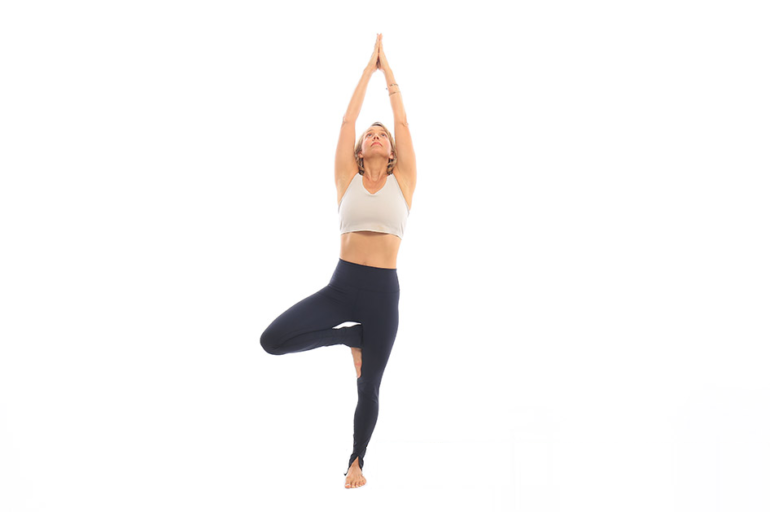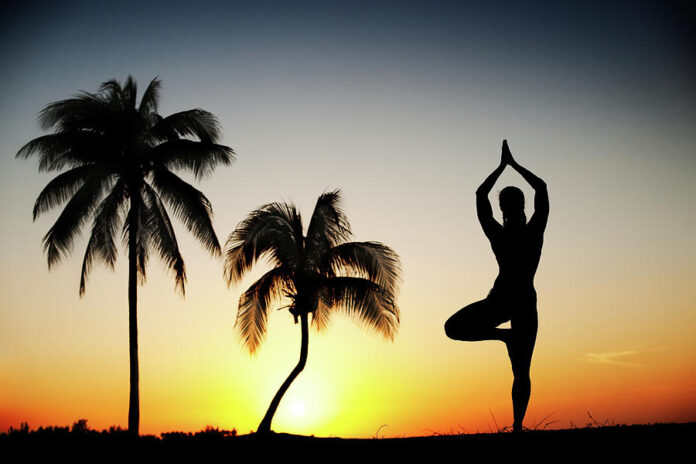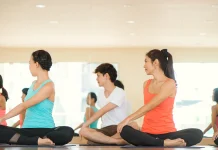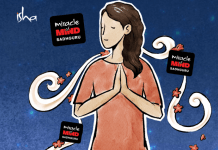Vriksasana or Tree Pose is a part of yoga poses. The name is derived from the Sanskrit words vriksa or vriksha (वृक्ष, vṛkṣa) meaning “tree”, and asana (आसन) meaning “posture”.
This posture is an imitation of the stable and graceful standing tree style. For this pose, unlike most other yoga poses, you must keep your eyes open to keep your body in balance. This pose has a number of benefits.
What You Should Know Before You Perform Vrikshasana
The best time to practice Vrikshasana is on an empty the stomach. You may do this activity after four to six hours of meals. This will give the body enough time to digest food and energize the body and get the body ready for activity.
The ideal time to do Vrikshasana is in the morning as it requires focus and concentration. The best time to do this pose is in the morning when our mind is still clear of worries and stress.
How to Do the Tree Pose (Vrikshasana)

- Stand straight and place your arms by your sides.
- Bend your right knee slightly, then place your right foot on top of your left thigh. Make sure that the soles of the feet are placed firmly and flat on the thighs.
- Your left leg should be completely straight. Once you are comfortable in this position, breathe, and find your balance.
- Now, inhale, and gently lift your hands above your head and bring them together.
- Look straight at a distant object and hold it at one point. This will help you maintain balance and stay focused.
- Keep your spine straight. Note that your body should be firm, but elastic. Take a deep breath, and each time you exhale, relax your body again.
- Gently lift your arms from the sides, and release your right leg.
- Return to the original position standing straight and straight as you did at the beginning of the exercise. Repeat this pose with the left leg.
Benefits of Vrikshasana
Vrikshasana has many benefits. This pose can be immediately felt the benefits if done regularly. Among others are :
- Strengthens the spine while improving balance and calm.
- Improves and helps nerve-muscle coordination.
- Tones the leg muscles while making the ligaments and tendons of the foot stronger.
- Knees become stronger, and hip joints are loosened.
- The eyes, inner ear, and shoulders are also strengthened in this pose.
- Relieve those who suffer from sciatica in the pelvis and reduce sciatica in owners of flat feet.
- Makes you stable, flexible and patient. It improves concentration and activates all mental faculties.
- This pose helps deepen the thorax.
The Science Behind Vrikshasana
This pose is a balancing posture and its main benefit lies in improving balance and improving the nervous system. When you balance your body, you are forced to focus your mind so that when you focus your body automatically balances. That’s where the continuous performance of mind and body in this pose. So that stress and pressure will stay away from you.
When you align your mind and body through the stretching process, this pose will strengthen your joints and bones. Broaden your hips and chest and loosen the muscles of your shoulders and arms.
Avoid these yoga mistakes: Don’t go barking up the wrong tree
As you might expect with a more advanced position, Tree Pose has a lot of moving parts and plenty of things that can go awry. Pay special attention to these common errors:
- Don’t let your hip stick out on your standing leg. Keep both sides square with each other at all times.
- Be careful that your standing foot doesn’t wobble off to one side. Make sure it points forward to protect your joints.
- Check that your bent knee isn’t waving around. Keep it steady and pointed out away from its corresponding foot.
- Relax your face, and avoid letting it become a rictus of sweaty effort. Keep it neutral. That’ll help your body relax in the same way.
- Avoid placing your foot on the knee of your standing leg. If you can’t quite bring your foot to your thigh, place it on your shin until you’re comfortable moving it up. But putting pressure on the knee joint risks injury and instability. Trees don’t rock like that.





